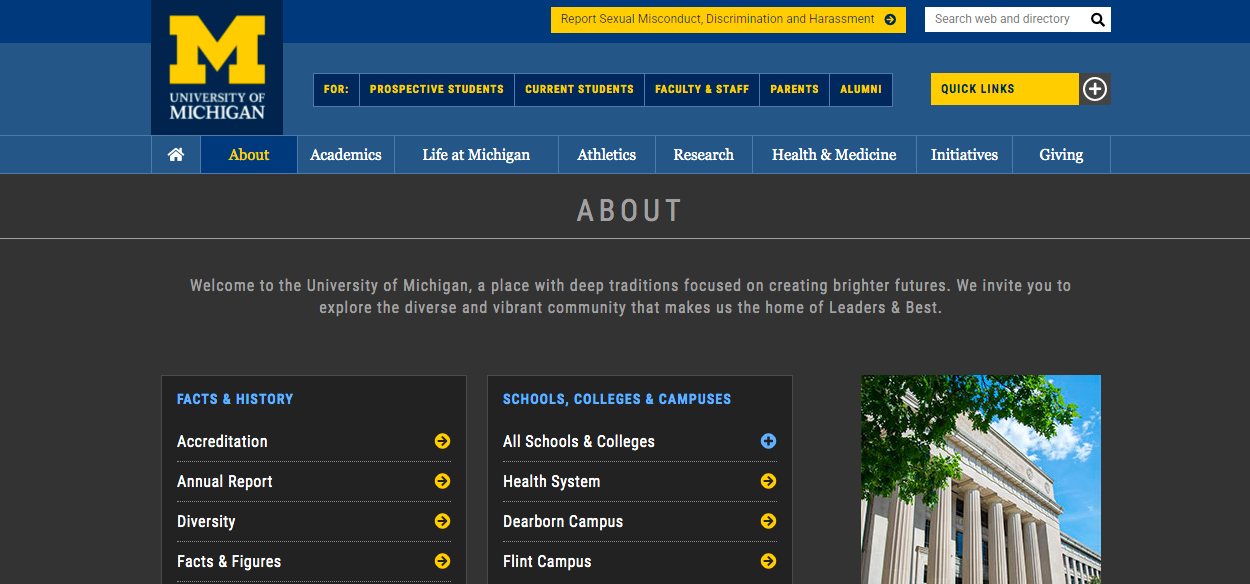What Is a Brand?
“Brand is the promise, the big idea, the expectations that reside in each customer’s mind about a product, service or company. Branding is about making an emotional connection.” (Alina Wheeler, Designing Brand Identity)
Take a moment and visualize the college or university you attended. What three adjectives or emotions immediately come to mind when considering your alma mater?
I did this exercise, thinking of the institution where I completed my undergraduate degree, and right away, these descriptors surfaced:
- Welcoming/non-intimidating
- Challenging
- Flexible and “alternative”
Then, I asked a fellow alum which attributes he associates with the university because I wondered if he might offer a similar response. He immediately said:
- Supportive
- Fulfilling
- Full of opportunities but underrated
Next, I decided to ask two people who had not attended the school to get a sense of whether their responses differed from our “insider” perspectives. My first volunteer said:
- Underrated (a kind of underdog, as compared to big-ticket alternatives in the same city)
- Good programs
- Vibrant and diverse
And my second volunteer reported:
- Progressive
- Non-traditional
- Welcoming
This little experiment was far from scientific, but it revealed some compelling consistencies in how the university is perceived from both the inside and the outside. Across all four responses, we can see a clear identity emerging that centers on progressiveness, diversity, and student support.
My alma mater seems to have done an effective job of weaving together an intentional, emotionally evocative brand. Which begs the question: How do current and prospective students perceive your school?
What attributes or descriptors do you hope students will think of first when they hear your school name or sum up their experiences as alumni?
Your success is in your ability to master education branding! Building trust with your target audience and setting yourself out of the competition mostly depends on how you construct your brand. However, creating a brand identity and strategy that works for your institute may be challenging.
If you’re still struggling to refine your school’s identity, then it is time to re-brand! How do you do that? Consider these five steps to cultivate a unique and impactful school brand.
1. Understand How Branding for Higher Education Can Inspire (and Repel) Prospective Students
A common question is, why does having an educational brand matter? Why should I care about branding? Branding plays a pivotal role in the success of your institute. According to SEMRush, the degree of recognition and recall of a brand is measured by its brand awareness. You can demonstrate a brand’s importance and market penetration by monitoring many measures. This can assist you in assessing the favourable or unfavourable reputation of your brand.
Example:

Source: SEMRush
Suppose you want your school’s brand to evoke positive associations with a particular group (or groups) of students. In that case, it makes sense to nail down what those personas look for most in an educational institution – and what turns them off.
Whether you’re re-tooling or starting from scratch, researching and developing your student personas is a key part of branding for higher education institutions. Insights into preferences, motivations, and concerns will help you narrow down which of your strengths to highlight most and which “character” elements you may need to improve. Plus, polling or interviewing students will reveal any prevalent misconceptions about your brand – perceptions you’ll strive to subvert and re-shape with your promotional campaigns.
Without this knowledge, you’re just taking a shot in the dark, allowing your decisions when branding colleges or universities to be guided by speculation and generalizations. This will result in a bland or unappealing identity, unlikely to stand up against more strategically defined competitors.
2. Align Your School’s Brand Identity with Your Audience’s Preferences
School branding is needed to set them apart to reflect their strengths, values, and mission as a place of learning. To avoid generic or misguided messaging, the marketing team (and other key stakeholders) must clearly define their institution’s positive attributes and how those align with their target audience’s motivations, challenges, concerns, and educational preferences.
A good question is: How do I brand my school? You could start by listing your school’s 5-10 top attributes and clarifying how each speaks to your audience’s goals and needs. These are the key messages you will use to guide every aspect of your marketing, working toward consistently targeted campaigns that reflect your unique culture as a school and the specific characteristics of your audience. Over time and with consistent effort, the attributes you’re emphasizing become synonymous with your name – they communicate your true purpose as an institution of learning.
When your audience knows exactly what your school stands for and feels that this mission aligns with their goals and values, you’re well on your way to building trust and loyalty.

Take the Academy of Learning Career College (AOLCC) for example. When I think of AOLCC, the words “future-oriented,” “supportive,” and “transformative” come to mind. And this doesn’t happen by accident. The marketing team has worked hard to communicate key messages around personalized learning, opportunity, and being an agent for positive change in students’ lives.
AOLCC has placed student career transformation and opportunity at the heart of its school branding, emphasizing the flexibility and support of its programs throughout its website. The website’s pages contain information about why choosing AOLCC is a worthwhile investment in one’s future, associating the school’s brand further with career growth and student success. AOLCC understands that these themes will motivate its target audience and generate trust in the brand.

AOLCC’s website reinforces this ethos, featuring keywords illustrating how students can achieve their goals by training for a career they’ll love at AOLCC. The website also emphasizes the accessibility and affordability of the school’s programs, representing its commitment to providing students with the support they need to complete their training.

And with the use of a leaf in its logo, AOLCC continues to echo the “growth” that its institution represents for the careers of its students, highlighting its commitment to helping students to make a positive change in their lives.

All of these elements combine to communicate a clear and impactful brand – one in which AOLCC becomes synonymous with career growth, transformative opportunity, and a commitment to helping students succeed, whatever their current situation may be.
3. Ensure Consistent Brand Elements Across all Marketing Channels
Inconsistency in logos, image, video quality, “about” descriptions, and slogans is a significant branding challenge for many schools. An inconsistency might look like a change in colour scheme from one page of a school’s website to another or even using a different font. Ensuring prospective students find consistent representations of your brand during their online search is essential for building a sense of familiarity, dependability, and trust.
There are several reasons brand inconsistencies happen. For example, when several different people are responsible for managing social media accounts, producing print materials, or updating the website, it’s easy for brand elements to become muddled. When a school has numerous campuses, with different marketing staff at each location, each branch can produce its variant of the institutional brand.
Avoid inconsistent representations of your brand by developing a style guide that provides clear guidance on your logo, colours, font, positioning, website header and footer design, and imagery – and an image bank that includes all of the approved photography and video that can be used across your school’s marketing channels.
For good examples of clear and consistent branding, look at large, renowned institutions such as the University of Michigan, whose iconic logo and distinctive blue and yellow colour scheme are universally familiar to people inside and outside academia.
The school’s well-defined brand is fully integrated into all promotional materials, making it recognizable and authoritative for prospective students.

4. Incorporate Your Community & History into Your School’s Branding
Whether you’re a K-12 school, language school, university, or career college, your institution does not exist in a vacuum. You’re part of a broader community, and your surrounding environment plays a role in enrollment decisions for many students.
Many millennials, for example, want to know how the college they’re considering contributes to local philanthropic organizations. Other prospective students and parents associate credibility with a long and illustrious school history – they prioritize schools that have been around for the last 50-100 years (or more) and consider longevity a hallmark of success.
It’s important to consider how context influences the perception of – or adds value to – your school brand.
Take, for example, John Cabot University, an American university in Rome. A big part of their brand identity is immersion in the surrounding community of Rome. Much of the courses and programs it offers focus on getting students integrated within the city of Rome, whether learning about the city’s history, participating in community service initiatives around Rome, experiencing cultural events, or simply exploring the city with a specific goal in mind.
This messaging is clearly and consistently communicated on their website, from the design of the school logo to the images and narratives that tell the brand story. For example, the images used throughout the website are consistent in the representation both of Rome itself and of JCU students within the city of Rome. As you can see here, the image on the school’s homepage features the Colosseum, a famous attraction in the heart of Rome.

Additionally, if we look closer at the wordmark, we can also see a nod to ancient Roman culture. Alongside its name and slogan, its emblem features Latin phrases, the language used in the Roman Empire, and classic imagery.

The university understands that for its prospective students, the fact that JCU is an American university in Rome makes the institution unique, leading it to emphasize the Roman community within which it is situated in each aspect of its branding.
Consider how your school’s environment, relationship to the broader community, and history influence its perception and how you might weave these elements into your brand story to connect with your target audience and differentiate yourself from the competition.
5. Look Critically at the Brand Identity of Your Competitors
Your competitors can also be a great place to look for examples of higher education branding. After all, you offer similar programs competing for similar target audiences. Examining how your main competitors present themselves in the market and which elements they emphasize to make emotional connections with current and potential students can be highly instructive.

Is your top competitor highlighting career opportunities (like AOLCC does) to establish itself as the college best suited to support tentative mature students and newcomers to Canada?
Has your top competitor woven community involvement into its brand identity, connecting with your audience’s desire to associate with philanthropic institutions that give back and do good?
Is a competing school doing a particularly effective job associating its brand with cutting-edge technology – which you know will resonate strongly with your particular audience and program offerings?
Or, is a competing institution doing a great job of recruiting a specific audience you’ve had trouble adding to your school population, such as international students or young millennials? How have they adapted their brand strategy to appeal to this demographic?
Taking the time to look critically at your competitors’ messaging can offer fresh insights into your evolving brand identity – helping you distill the most memorable, unique, and emotionally stirring impression of all.
*Editor’s note: This blog was originally published on 20th July 2016 but has been updated to reflect current trends







